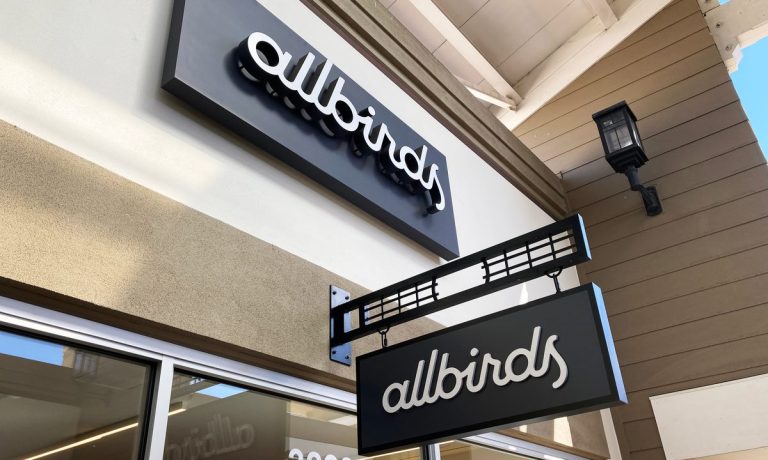Allbirds Sees 91% Gain in Wall Street Debut Almost Doubling IPO Price

Update (5 p.m.):
Eco-friendly footwear and apparel company Allbirds saw a 91% gain in its first day of trading Wednesday (Nov. 3) and raised almost $303 million. The stock closed at $28.64, almost doubling its initial public offering (IPO) price of $15 per share.
Company executives visited the Nasdaq MarketSite in Times Square Wednesday morning to ring the opening bell.
Previous:
Sustainable shoemaker Allbirds is debuting on the Nasdaq under the symbol BIRD Wednesday (Nov. 3), the latest direct-to-consumer (D2C) brand in recent months to try its hand as a public company.
Late Tuesday, the company priced its initial public offering (IPO) at $15 per share, slightly higher than the $12 to $14 range it said it was hoping for last week. With nearly 20.2 million shares sold, Allbirds has raised approximately $302.9 million through its offering. The company has a market value of about $2.16 billion based on the outstanding shares listed in its filings with the U.S. Securities and Exchange Commission.
Since September, other D2C brands to go public have included Warby Parker, Brilliant Earth, Rent the Runway and On, a shoemaker backed by tennis star Roger Federer. What most of them have in common is that they started primarily, or exclusively, online but found the need for a brick-and-mortar presence. Allbirds itself had 27 stores in the first half of 2021 and has opened several new locations since then.
Many of these companies have also struggled to make a profit despite consumer popularity. Allbirds, for example, lost $21.1 million in the first half of 2021 after losses of $25.9 million in 2020 and $14.5 million in 2019. The company’s revenue for the first half of 2021 was $117.5 million after reaching $193.7 million in 2019 and $219.3 million last year, with digital sales representing 89% of total sales at $194.6 million.
Joey Zwillinger, co-founder and co-CEO of Allbirds, said in a televised CNBC interview, though, that pre-pandemic, the company was “very close to and on the path to breakeven.”
“So this is something well within our sights, and we see a very clear and short-term path or else we wouldn’t be going public,” he added.
Read more: Allbirds Files for IPO Amid Ongoing Losses
Warby Parker has also seen losses grow. Despite net revenue of $393.7 million in 2020 — 6.3% higher than 2019 — the company had $55.6 million in losses, up from $1.7 million in 2019. Warby said 60% of its net revenue in 2020 was from eCommerce, though during the end of June of this year, online sales dropped to 50%. For all of 2021, Warby Parker expects sales growth of 36%, to $537 million, in part helped by the opening of 30 to 35 new stores, bringing the company’s total to 160 locations.
Up Against Giants
Most D2C consumer product brands are up against some of the biggest companies in the world, and Allbirds, of course, is no different, facing Nike, Adidas and other well-established brands.
But while Nike and others are traditional retail brands in the midst of transitioning to D2C, Allbirds is D2C at its core, which could be an advantage for the company. According to PYMNTS research, over 41% of consumers have used D2C channels to buy shoes and nearly 36% have used the channel to buy clothing and apparel.
Additionally, over 50% of consumers say they made a consumer packaged goods (CPG) purchase from a new brand since the pandemic began, and 83% of consumers who adopted D2C channels during the pandemic say they plan to maintain some or all of their new habits.
Related: Sneaker Startup IPOs Take a Run at Nike
Allbirds also places sustainability at the core of its operations, which brands large and small have come to realize is among the keys to attracting consumers in 2021. According to a report from the National Retail Federation and IBM, 57% of consumers would be willing to change their habits in order to reduce their environmental impact and 77% say it’s at least moderately important that brands are sustainable and environmentally responsible.
Zwillinger said at a forum last year that consumers are realizing that “climate change is upon us, and that the next five years are going to make or break the next hundred years for our species.” He added, “We are at the very forefront of a massive tidal wave of change in consumer perception on this stuff.”